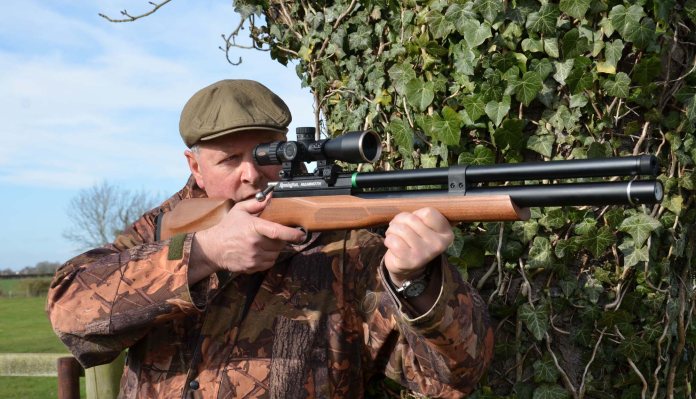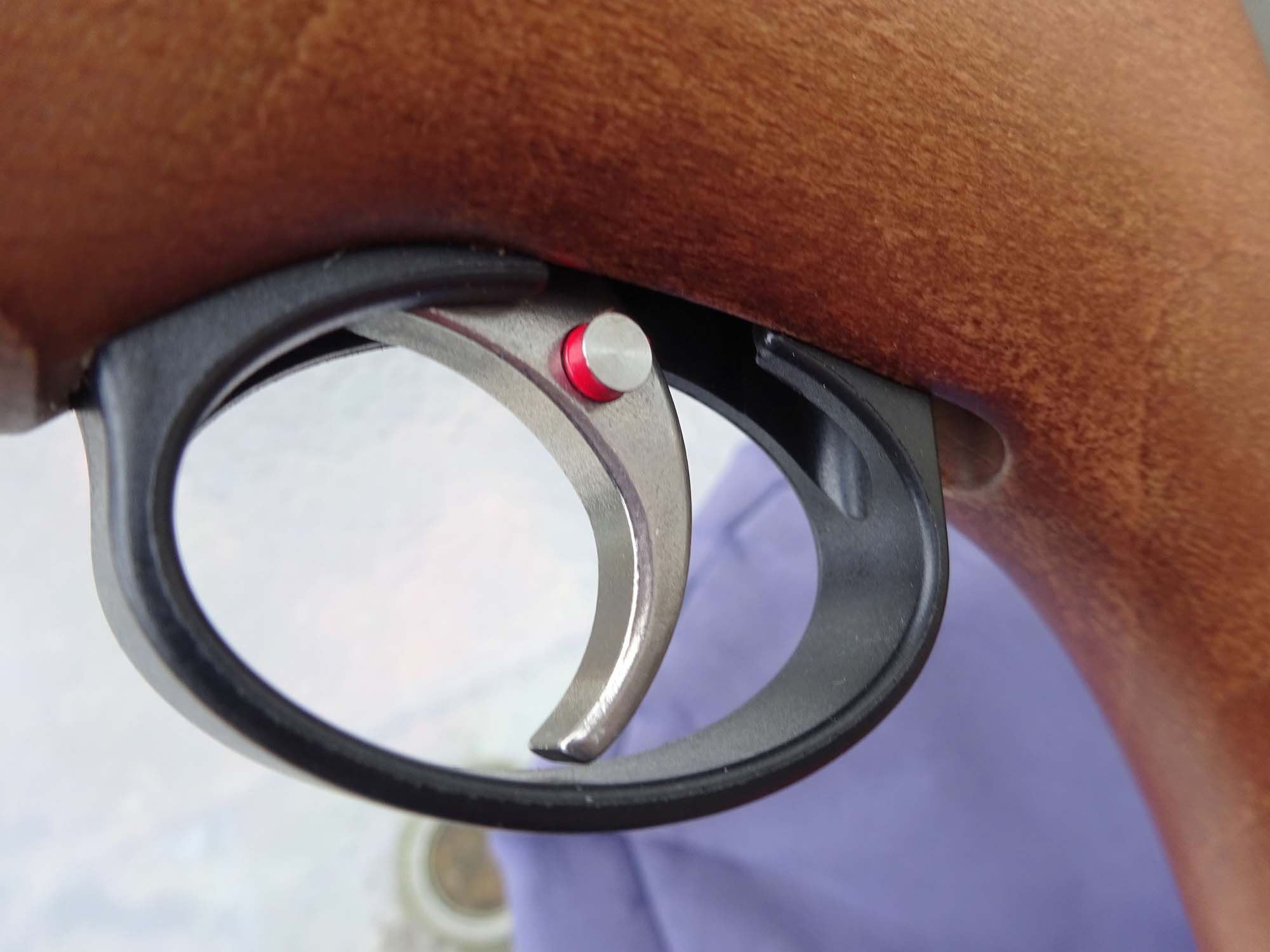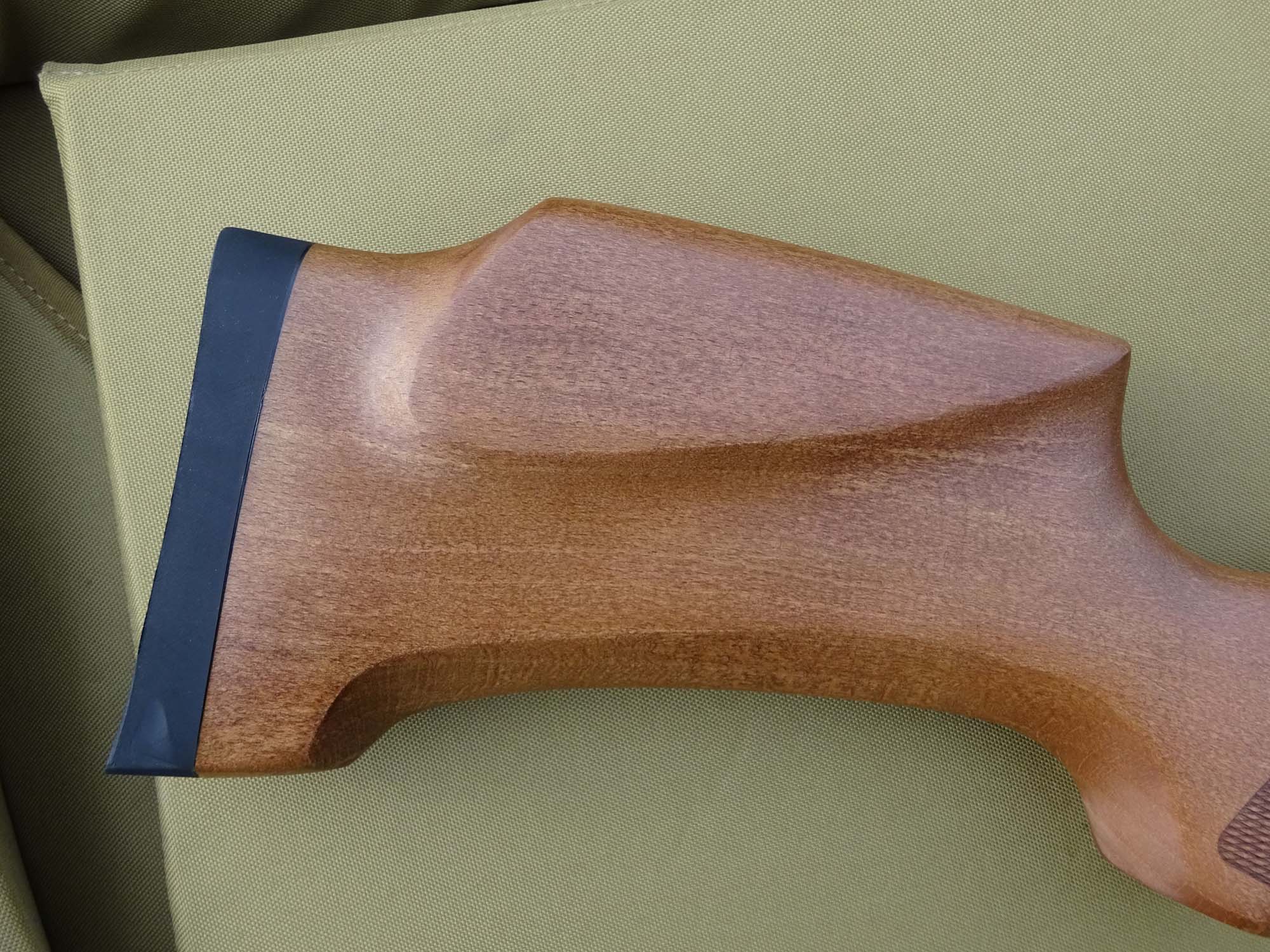Remington Mammoth PCP Air Rifle Review: A Big Performer
- Last updated: 14/07/2025

Remington is a famous name in the shooting world and one that SMK has within its portfolio of officially licensed branded products. On test here is a new model, the Remington Mammoth, and it’s a stunning PCP, with, as the name suggests, adult proportions. Graceful styling helps the visuals, but the specification, especially considering the RRP, is another big plus in the Mammoth’s favour.
Inside the smartly illustrated box, there’s a host of goodies, which, on the face of it, make the current asking price of £369 seem like quite a bargain! There’s a single-shot tray, a magazine, some spare seals, a filling adaptor, a silencer, and even a 3-9x40 kit scope with some Picatinny mounts. Everything we need to get started, then.

So, an honest assessment has to conclude that the kit scope supplied is fairly crude. I gave it the once-over, but the clarity wasn’t great, and it wasn’t easy to achieve a crisp point of focus, so I decided fairly early on to go my own way optics-wise if I was to give the Mammoth a fair test and evaluation. A super-compact 3-12x44 F2 MTC Copperhead scope looked ideal and was soon bolted into place using Picatinny mounts, where it remained for the duration.

Now, something to consider here is the significant height of the magazine when in position, and it’s something that affects many PCPs. Just check the scope body clears the magazine before tightening up any mount screws, and all will be well.
Take a look at the Mammoth without the silencer; it looks smart and well-proportioned, and I really like the full-length barrel shroud that sits over the cylinder. Now, with the 5.75” silencer screwed into position, the overall length starts to add up, and that smart, sleek look is lost. Purely an observation, not a criticism, as it’s always handy to have an additional element to play with, and at 6oz, the silencer is weighty enough to fine-tune balance. On test, unscrewing the knurled ring at the muzzle proved slightly irritating, as the shroud retaining lug kept unscrewing with it, loosening the entire assembly. A gentle clamp in some padded grips is the way forward if you encounter the same problem. Thread on, thread off – it’s all very straightforward.

I love the look of the hardwood stock here, and I’d hazard a guess that it’s beech, given the grain pattern. The configuration is ambidextrous and immensely appealing without being too much of a compromise. A shapely, prominent cheekpiece coupled with a sleek, stylish fore-end is all very easy on the eye, but more importantly, it feels great in the aim. The butt pad is a bit tough, and the laser chequering is very shallow, but overall, it works well.

As for the action, this is obviously an area where cost savings can be made, with a matte black finish to the metalwork, rather than any attempt at bluing. That said, the machining and the finish are all up to a fair standard, and the end result is a very appealing and attractive sporter, right down to the subtle green ring at the base of the shroud. The meaty shroud support bracket gives strength to the setup, and while I would probably remove it for my own obsessive, competition-focused reasons (such as allowing the cylinder to expand independently, as is usual), it certainly looks the part.

The Mammoth, as mentioned earlier, comes with a single-shot tray, along with a 12-shot magazine. The single-shot tray is a neat, machined metal affair, and it slots into the breech once the bolt has been withdrawn. On test, the small magnet seemed a little weak, as the tray tended to move a little when a pellet was rolled across.

As for the magazine, this is quite a complicated mechanism compared to some, but it worked faultlessly on test. With regard to filling it, the instructions are basic and ambiguous, but I got there in the end. No pre-wind is needed, just insert a pellet into the first chamber, click round to the next, and repeat until full.
The long, sleek cylinder has a 250cc capacity, so a reasonable shot count should be on the cards with this model. The recommended fill pressure is reassuringly printed on the front of the cylinder and stated as 25MPa, or 250bar in old money. The filling adaptor is the super-slick ‘stick’ type, which acts as a probe that inserts into the valve at one end and features a Foster quick connector at the other. It should be a ‘tools-free’ experience, and I’m a big fan of the design.

On test, it all worked well, but just ensure the probe is fully inserted at the start, as I only noticed I hadn’t done this well into the charging regime! I got away with it, but it makes sense to get familiar with the fittings before connecting up to high-pressure air, and all will be fine.

The recorded velocity figures show that from a 250bar fill, you can get 78 shots with a total spread of 21fps. Keeping tabs on pressure is easy, courtesy of the manometer built into the front of the cylinder. OK, it’s never a safe place to put one, but I always get into the routine of flicking the bolt open before I attempt a glance at the gauge, just to be ultra-safe.

Analyse the figures, and a 21fps total spread over 78 shots is really usable consistency. However, my figures also show that from a lower 200bar fill, I clocked 66 shots, all within 11fps. So, for me, it’s a no-brainer: charge to that lower pressure, putting less stress on components, and get superb consistency into the bargain! If you’re just playing and plinking, then velocity figures are largely academic. But head into the field for a hunting session, and it suddenly becomes important to push for maximum performance and have the consistency and capability for clean, ethical shots. That’s when it pays to have done some homework.

On the range, it was time to get a feel for the Mammoth. Weighing in at 7lbs, it handles really well and never seems a burden, making it a strong contender for hunting duties. It’s a little noisy without the silencer, but it has a slick muzzle report as some spent air is dissipated and finally leaves the shroud. It sounds technical, and my test gun just felt nicer to shoot without the silencer in place. For me, the balance was better, and the groups were slightly tighter too. Of course, if you steer towards real-world hunting, then you’ll probably add the silencer to kill the report to a whisper regardless.

Accuracy tests were undertaken from a rested prone position, and I have to say it was difficult not to be impressed, considering the low asking price. Ragged clusters at 30 yards were easily achieved using both BSA Goldstar pellets and Air Arms Diabolo Field, but the Air Arms ammo had the edge when the range was extended out to 40 yards. Penny-sized groups at that distance are not to be sniffed at, and that level of performance seemed reasonably easy to come by.

In terms of ergonomics, I love the chunky stainless bolt, although the initial cocking effort is significant, so cocking from the prone position, with the Mammoth in the shoulder, has to be a more deliberate operation. On the other hand, closing the bolt is effortless, and this is something I found I could do just with the thumb. The magazine cycled faultlessly throughout, and I was just left admiring what is a very capable airgun.
The kit scope was fairly basic, which comes as no surprise, as they usually are in my experience. Elsewhere, there’s little to fault, as this PCP proved a serious performer on test. Add in the stylish profile, great looks, and all the included accessories, and it’s hard to ignore the Remington Mammoth, whether it’s seen as a value-for-money starter option or a capable budget hunting rifle.
